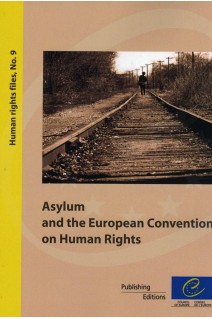



Political upheavals, economic reforms, social instability and civil war have all been factors contributing to changes in the mixed flows of migrants both to and within Europe. Many of those in need of international protection are forced to seek it in Europe and the new member states of the enlarged Council of Europe are now also experiencing the arrival of asylum seekers.This revised edition considers the substantial body of case law of the European Court of Human Rights which has examined the compatibility of the Convention with measures taken by states in relation to all aspects of the asylum process. It also observes the role of subsidiary protection offered by the Strasbourg organs in protecting those at risk of prohibited treatment. In addition, the study considers the increasingly relevant provisions of EU law developments in the field, as well as measures taken in the context of terrorist threats - both of which have had a significant impact on the practical circumstances and law on refugees and asylum seekers.
Introduction
Overview
Background considerations: movement of refugees in Europe from the aftermath of the Second World War to the present
Recent trends in Europe
Part One - The role of the European Convention on Human Rights in protection from expulsion to face human rights abuses
The applicability of the Convention to asylum cases
The risk of torture, inhuman or degrading treatment
The significance of the jurisprudence of the UNCAT Committee
The extraterritorial application of other articles of the ECHR
Procedural guarantees and the right to an effective remedy where expulsion is threatened
Forced expulsion of reluctant deportees
Part Two - The role of the European Convention on Human Rights in situations not involving protection from expulsion
Detention under Article 5 and restrictions on freedom of movement under Article 2 of Protocol No.4
Family life and private life
Children and asylum
Article 12 - The right to marry and found a family
Status of those whose claim is being examined or has been rejected
Non-discrimination - Article 14 and Protocol No.12
Racism, xenophobia and the media
Terrorism
Part Three - The subsidiary protection of the European Court of Human Rights
The right of individual petition
Interim measures - Rule 39
Expediting cases
Conditions to be fulfilled
Execution of judgments - The Committee of Ministers
Asylum and the European Union
Conclusion
Appendix I - Selected Council of Europe instruments relating to asylum
Appendix II - Key European Union texts relating to asylum
Appendix III - Guidelines on human rights and the fight against terrorism (extract)
Appendix IV - Countries which have accepted the right of individual petition under the United Nations Convention against Torture
Download an extract (1000)

Political upheavals, economic reforms, social instability and civil war have all been factors contributing to changes in the mixed flows of migrants both to and within Europe. Many of those in need of international protection are forced to seek it in Europe and the new member states of the enlarged Council of Europe are now also experiencing the arrival of asylum seekers.This revised edition considers the substantial body of case law of the European Court of Human Rights which has examined the compatibility of the Convention with measures taken by states in relation to all aspects of the asylum process. It also observes the role of subsidiary protection offered by the Strasbourg organs in protecting those at risk of prohibited treatment. In addition, the study considers the increasingly relevant provisions of EU law developments in the field, as well as measures taken in the context of terrorist threats - both of which have had a significant impact on the practical circumstances and law on refugees and asylum seekers.
Please note that in accordance with our terms & conditions, PDF/epubs may only be purchased by private individuals.
